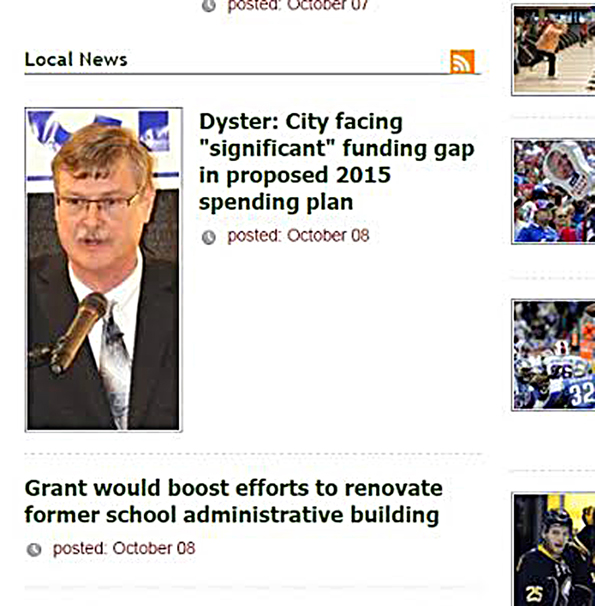 |
This screen shot of the Niagara Gazette web page carries an almost perfect irony. The website had these two top stories:
The first is that the "City facing funding gap..."
The second is that the city is giving away $150,000 in public money to a developer for more low income housing "to renovate former school administrative building..."
|
|
|
|
|
|
All together now, put your lips together and say with me: “structural deficit.”
If you don’t say it, if you don’t know it, if you don’t learn it, you’re going to fall behind the Niagara Falls information curve, and be left in the dust as the next six weeks of municipal budget drama passes over your head.
The Dyster administration is $9 million in debt.
As the city hall story goes, the debt is no longer a simple “debt.” It’s no longer a case of more money going out than coming in.
No, the city has a “structural” deficit.
In a Dyster city hall where wasteful projects (courthouse, train station, Underground Railroad Interpretive Center) are called “transformational initiatives,” a formerly simple matter of owing more money than you possess has been re-phrased as a “structural” deficit.
The truth of the matter is that the first use of the word “structural” in regard to the city budget problems was contained within the New York State Comptroller’s audit of Niagara Falls in spring of 2013.
That audit from Thomas DiNapoli’s office reported that the city was relying on “one-shot” budget fixes and casino cash that didn’t exist in order to keep the budget balanced.
The term “structural deficit” was originally a criticism of the Dyster administration’s money management style, issued by the comptroller of New York State, DiNapoli, a fellow Democrat.
In a city hall where things are rarely what they seem and information is routinely withheld from those who file freedom of information requests, Dyster has taken the deficit he ran-up and uses the phrase “structural deficit” as if something was broken and simply needed a repairman with a box of tools to make it well.
Dyster has turned a vast monetary shortfall into a matter of “structure.”
Dyster has turned a deficit into something that can be repaired, sort of like fixing the roof of a structure when it leaks.
Dyster’s nimble re-positioning of the $9 million shortfall has, in his mind, removed him as the leading cause of the problem: his irresponsible spending.
Not so fast, Mr. Mayor.
From page 9 of the state audit, “We found that the City had a pattern of structural budget deficits, meaning recurring revenues were not sufficient to fund recurring expenditures. During our audit period (2009-2013 budgets) the general fund’s budget gap averaged $12.4 million. City officials balanced the budgets using fund balance (i.e savings or reserves for emergencies) and an estimate for casino revenues that averaged $5.3 million annually.”
And on page 10, “The City has funded these structural deficits by relying on ‘one-shots’ such as fund balance and surplus moneys remaining in the capital project fund…while the City has been significantly affected by the casino revenue impasse, its financial condition has worsened significantly due to its budgeting practices.”
While the state’s recommendations for fixing the city budget deficit were numerous, two key recommendations were: “1.The Mayor and Council must develop structurally sound and realistic budgets. 2. City officials should prepare and adopt a multiyear financial plan.”
There you have the state audit’s advice in a nutshell.
Advice the mayor ignored.
Read the full version of the state comptroller’s audit online by searching for “City of Niagara Falls Financial Management and Information Technology Report of Examination Period Covered January 1, 2009 – January 9, 2013 2013M-47.”
Read this document and get the background of what really happened to the city’s finances. You’ll want to stay fully informed as the next six weeks dramatically unfolds.
Now, repeat after me, “structural deficit.” |

